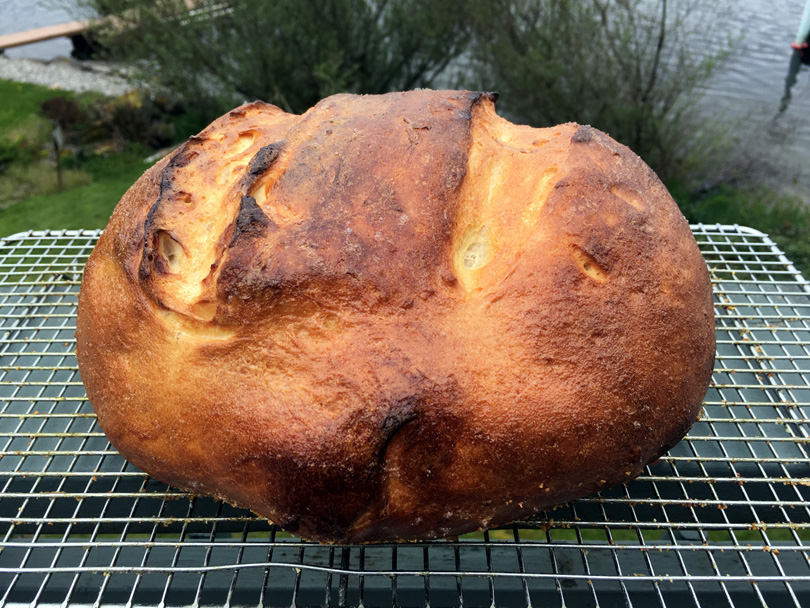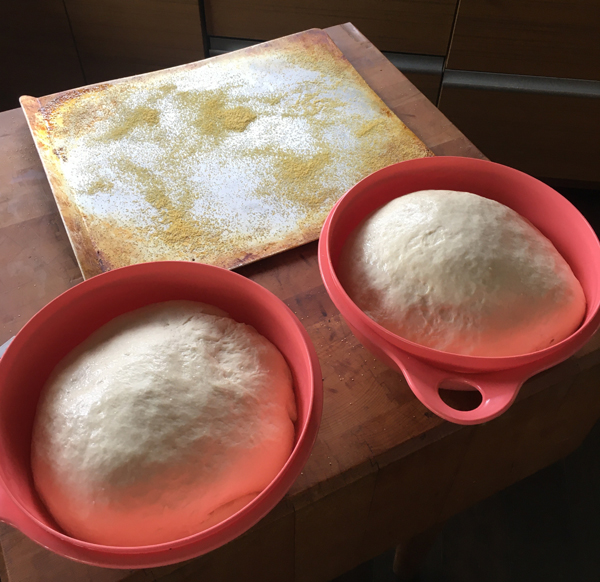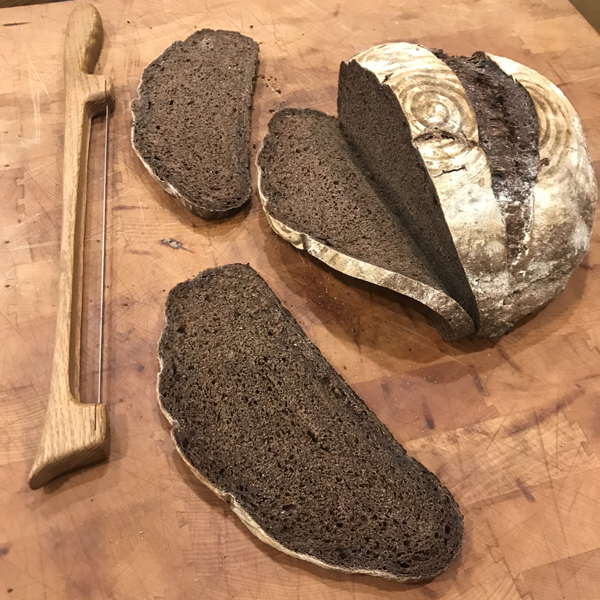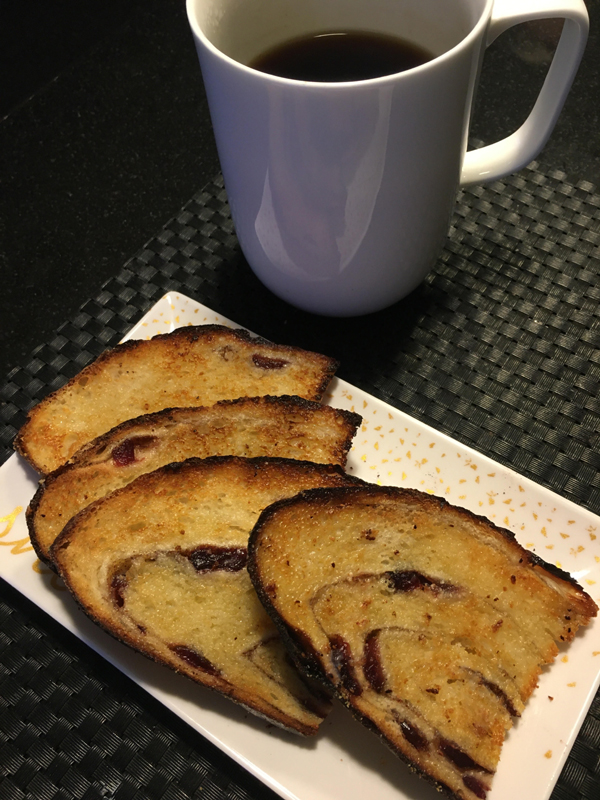
A Brief Recent
History of Sourdough
 Sourdough is all the rage today but how did we get here and what are we doing
anyway?
Sourdough is all the rage today but how did we get here and what are we doing
anyway?
For thousands of years bread was naturally leavened
with wild yeast starters. Water and flour mixed and exposed to wild yeast spores
was used to leaven bread. Two hundred years ago settlers crossing the
great plains saved a little dough (starter) in their flour barrels for the next
days bread. Alaskan gold rush miners would do the same. Save some dough to start
a new batch tomorrow. Skip forward to modern times. About fifteen years ago the
NY Times ran an article on No-Knead bread that really caught on. Novice bakers
learned how to make bread with minimal effort. Skip forward to present day. Then
along came Covid-19. With time on their hands people started making their own
sourdough. It was and still is all the rage.
A common
method people are using today to make their sourdough was derived from the
No-Knead bread method of fifteen years ago. A precise amount of starter is mixed
with precise amounts of water and flour. Everything is measured on a food scale
in grams. This results in a wet dough (high hydration). A dough too wet to knead.
In some instances an autolyse in used. (Autolyse
- water and flour are mixed with or without starter and allowed to sit for a few
hours.) Finally the wet dough is stretched with a scrapping tool and then
refrigerated for hours and hours before final shaping and baking. The dough is
so wet that it needs to be baked in a form. Otherwise the dough would spread out
on a pan like a pancake. A preheated Dutch oven lined with parchment paper is
used as the form to bake the loaves. The loaves are baked at high heat with
the lid on to hold in moisture initially. Final baking is uncovered. The whole
process takes hours and hours if not days. Yikes!
In my
humble opinion we took a wrong turn. We zigged when we should have zagged. The
No-Knead method was a half measure in the first place. Who does not have ten
minutes to knead by hand or a bread machine to make dough or a mixing machine?
How busy are you really? This current school of sourdough methodology was
built on a bed of sand. It has resulted in a process with too much measuring. A
process that is too time consuming. A process that requires working with a hard
to manage wet dough. A process that requires endless dough stretching and
folding. A process that requires a form (Dutch oven).
I use a more traditional method and make wonderful sourdough loaves. My methodology
is old school. Bread is made the old fashioned way using a traditional stiff
dough. The water is measured and little else. Water is the fixed in the
formula. All else is variable. I do real kneading in my mixer. No autolyse. No
day in the fridge. It is a fast process. As easy as making any bread. The only difference is the use of wild
yeast sourdough starter in place of commercial yeast. The same way settlers made
sourdough years ago. Granted I automate the process with
machines. But I could make my sourdough by hand. I speed the process by turning
my home oven into a proofer. I bake on an oiled cookie sheet with a little corn
meal. No form/Dutch oven required. My bottoms don't burn either!
Take a
look at some of my loaves at
Sourdough Central. These were all made with my
traditional method. Try it. Sourdough does not need to be complicated. I don't
use bannetons either. I use plastic bowls for my traditional rising.



More Tips
at the following links:
Pizza: Thick Crust vs. Thin Crust
© Copyright
1990-2021
Video Bread
videobread@gmail.com
Better bread baking starts
with Video Bread. The recipe for success!


 Sourdough is all the rage today but how did we get here and what are we doing
anyway?
Sourdough is all the rage today but how did we get here and what are we doing
anyway?

